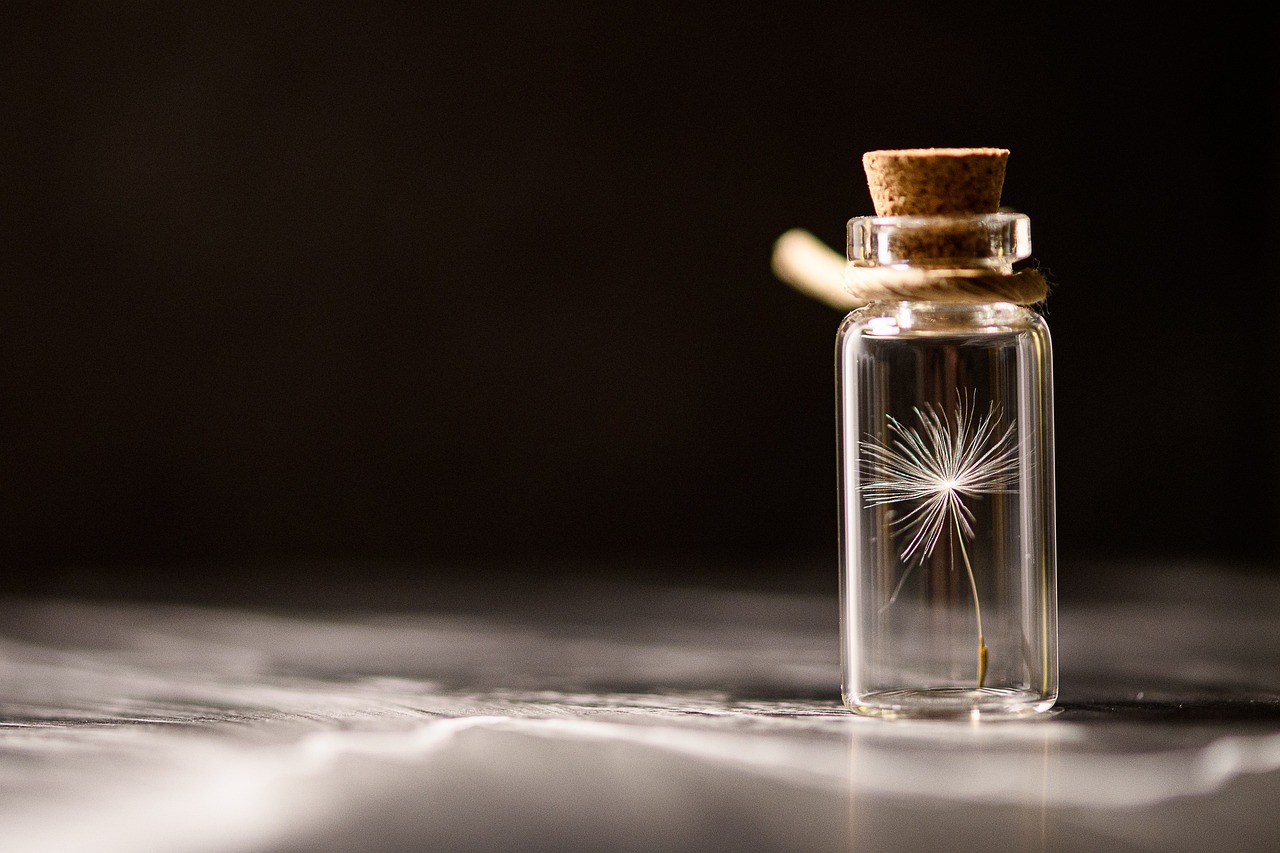How to Preserve Your Finished Artwork
Creating a piece of art is like capturing a moment in time, a burst of creativity that deserves to be cherished forever. But what happens when that vibrant painting or delicate sculpture starts to fade or deteriorate? Preserving your finished artwork is essential not just for maintaining its aesthetic appeal, but also for protecting the investment you’ve made in your creative expression. In this article, we will explore various methods and techniques to ensure your artwork remains vibrant and intact over time, covering aspects such as storage, framing, and conservation practices that are essential for preserving artistic integrity.
Preservation is crucial for maintaining the quality and longevity of your artwork. Think of your artwork as a living entity; it requires care and attention to thrive. Proper preservation techniques not only enhance the visual appeal of your pieces but also significantly impact their value over time. Whether you're an artist or a collector, understanding the importance of preservation can help you make informed decisions about how to care for your artwork.
By implementing effective preservation methods, you can avoid the heartbreak of losing a beloved piece to environmental factors. Imagine walking into your gallery or home and being greeted by the same stunning colors and details that inspired you to create in the first place. This is the power of preservation—it allows your art to continue telling its story for years to come.
Proper storage conditions can significantly affect the lifespan of your artwork. Just like you wouldn’t store perishable food in a hot, damp place, your artwork also needs a suitable environment. Factors such as temperature, humidity, and light exposure play a pivotal role in safeguarding your pieces. By understanding these elements, you can create a sanctuary for your art that will keep it safe from harm.
Maintaining a stable temperature is vital for preserving artwork. Fluctuations in temperature can cause materials to expand and contract, leading to cracks and warping. The ideal temperature for storing artwork generally falls between 65°F to 75°F (18°C to 24°C). To regulate climate in your storage area, consider using a thermostat or a climate control system. This ensures that your artwork is not subjected to extreme heat or cold, which can be detrimental over time.
Humidity can be a silent killer when it comes to artwork preservation. High humidity levels can foster mold growth and cause paper-based works to warp or deteriorate. On the other hand, low humidity can lead to cracking and brittleness, especially in materials like wood and canvas. Ideally, you should aim for humidity levels between 40% to 60%. To monitor and control humidity levels, consider investing in a hygrometer and a dehumidifier or humidifier as needed. This simple step can make a world of difference in protecting your cherished pieces.
Excessive light can fade colors and damage materials, much like how the sun can bleach a favorite shirt left out too long. To minimize light exposure, store your artwork in a dark room or use UV-filtering glass if you plan to display it. Additionally, consider using curtains or blinds to shield your pieces from direct sunlight. By taking these precautions, you can maintain the integrity of your finished pieces, allowing them to shine brightly for years to come.
The right frame can enhance and protect your artwork. When selecting framing materials, consider using acid-free mats and UV-protective glass to prevent deterioration. These materials act as barriers against environmental factors that can cause damage. A well-chosen frame not only adds to the visual appeal but also provides crucial protection against dust, dirt, and physical impacts.
When framing your artwork, ensure that there is adequate space between the art and the glass to prevent any sticking or moisture buildup. This small detail can save your artwork from potential damage and help it maintain its original allure.
Regular cleaning and maintenance are essential for preserving artwork. Just as you would dust your furniture to keep it looking fresh, your artwork also requires a gentle touch. Discovering safe cleaning methods and establishing maintenance routines can keep your art in pristine condition. Remember, a clean piece of art not only looks better but also lasts longer.
Learn about the best practices for cleaning different types of artwork without causing damage. For example, use a soft, dry microfiber cloth for dusting paintings and avoid using water or cleaning solutions unless specifically recommended. For sculptures, a gentle brush can help remove dust from intricate details without scratching the surface. Always test any cleaning method on a small, inconspicuous area first to ensure it won’t cause harm.
Implementing a maintenance schedule can prolong the life of your artwork. Regular checks for signs of damage, such as fading or discoloration, can help you catch potential problems early. Additionally, consider rotating the display of your artwork to prevent uneven exposure to light and environmental factors. By being proactive in your maintenance efforts, you can ensure that your artwork remains as stunning as the day you finished it.
- How often should I clean my artwork? - It’s advisable to dust your artwork every few months, but more thorough cleaning should be done annually.
- Can I use regular glass for framing? - While regular glass can be used, it’s best to opt for UV-protective glass to prevent fading.
- What’s the best way to store artwork long-term? - Store artwork in a cool, dry, and dark place, ideally in acid-free materials.

Understanding the Importance of Preservation
When it comes to your artwork, preservation is not just a matter of keeping it safe; it's about ensuring that the passion, creativity, and hard work you poured into it remain visible for years to come. Just like a fine wine that improves with age, your artwork can maintain its beauty and value if treated with the proper care. Imagine walking into a gallery and seeing a piece that has lost its vibrancy over time; it's a sad sight, but it doesn’t have to be your reality.
The benefits of proper preservation techniques extend beyond mere aesthetics. For artists, collectors, and enthusiasts alike, maintaining the quality of artwork can significantly impact its monetary value. Well-preserved pieces often command higher prices in the market, while those that are neglected can see their value plummet. Think of preservation as an investment in your art’s future. By taking the necessary steps today, you can protect your investment for tomorrow.
Additionally, the emotional connection we have with our artwork is something that should not be overlooked. Each piece tells a story, evokes memories, and sparks emotions. When art is preserved properly, it continues to resonate with those feelings, allowing future generations to experience the same joy.
To give you a clearer picture of why preservation is essential, consider the following aspects:
- Longevity: Proper preservation techniques can extend the life of your artwork, allowing it to be enjoyed for many years.
- Value Maintenance: Well-preserved art pieces tend to retain or even increase in value over time.
- Emotional Connection: Preserving art allows future generations to connect with the emotions and stories behind each piece.
In summary, understanding the importance of preservation is the first step towards safeguarding your artwork. It’s about more than just keeping it safe; it’s about honoring the effort and creativity that went into creating it. So, whether you’re a budding artist or a seasoned collector, taking the time to learn about preservation techniques will pay off in the long run. Your artwork deserves the best, and with the right care, it can continue to inspire and delight for generations to come.

Choosing the Right Storage Conditions
When it comes to preserving your finished artwork, is absolutely critical. Think of your artwork as a delicate flower; it needs the right environment to flourish and stay vibrant. If you simply toss it in a corner or leave it exposed to the elements, you risk fading colors, warped canvases, and even irreversible damage. So, what should you consider when creating the perfect sanctuary for your art? Let's dive into the key factors that play a significant role in safeguarding your precious creations.
First off, temperature is a major player in the preservation game. Ideally, you want to maintain a stable temperature that hovers around 70°F (21°C). Fluctuations can lead to expansion and contraction of materials, which can cause cracks or warping. To keep things consistent, consider using a climate control system or even a simple thermometer to monitor the conditions in your storage area. Remember, just like you wouldn’t want to live in a place that’s too hot or too cold, your artwork deserves the same consideration!
Next up is humidity. High humidity can create a breeding ground for mold, while low humidity can cause materials to dry out and crack. The sweet spot for humidity levels is between 40% and 50%. To keep track of this, investing in a hygrometer can be a lifesaver. If you find that your space is too humid, using a dehumidifier can help. Conversely, if it’s too dry, consider placing a small humidifier in the area to maintain the right balance. Just imagine your artwork as a sponge—too much moisture and it becomes soggy, too little and it crumbles!
Now, let’s talk about light exposure. While natural light can be beautiful, it can also wreak havoc on your artwork. UV rays can fade colors and damage materials, leading to a loss of vibrancy over time. To combat this, consider storing your pieces in a dark room or using UV-filtering glass if you plan to display them. Additionally, when you do have to light the area, opt for LED lights, which emit less heat and UV radiation compared to traditional bulbs. Think of it as putting on sunscreen for your art—protection is key!
In summary, creating the right storage conditions for your artwork is not just a good idea; it's essential. By paying attention to temperature, humidity, and light exposure, you can greatly extend the life and beauty of your pieces. Just as you wouldn’t neglect your favorite plant, you owe it to your artwork to provide it with the nurturing environment it deserves. So, take a moment to assess your storage area and make the necessary adjustments. Your art will thank you!
- What is the ideal temperature for storing artwork? The ideal temperature is around 70°F (21°C) to prevent damage from fluctuations.
- How can I monitor humidity levels? You can use a hygrometer to keep track of humidity levels in your storage area.
- Is natural light harmful to artwork? Yes, excessive natural light can fade colors and damage materials over time.
- What type of lighting is best for displaying artwork? LED lights are recommended as they emit less heat and UV radiation.

Temperature Control
Maintaining a stable temperature is vital for preserving your artwork, as fluctuations can lead to significant damage over time. Just think of your artwork as a delicate flower; if the environment is too harsh, it will wilt and lose its beauty. Ideally, the temperature should be kept between 65°F and 75°F (approximately 18°C to 24°C). This range is generally considered optimal for most types of artwork, including paintings, drawings, and photographs.
To achieve and maintain these temperature levels, consider the following strategies:
- Climate Control Systems: Investing in a good heating, ventilation, and air conditioning (HVAC) system can provide a consistent environment for your artwork. Ensure that your system is regularly maintained to avoid sudden temperature spikes or drops.
- Thermometers: Use reliable thermometers to monitor the temperature in your storage area. Digital thermometers often come with alerts, so you'll know immediately if the temperature strays outside your desired range.
- Location Matters: The placement of your artwork is crucial. Avoid areas near windows, doors, or heating vents, as these spots are more susceptible to temperature fluctuations. A dedicated room or closet with controlled conditions is ideal.
Moreover, if you're storing your artwork for an extended period, consider using insulated storage boxes. These can provide an additional layer of protection against temperature changes. It's like putting on a cozy sweater when the weather gets chilly—keeping your pieces snug and secure.
In conclusion, controlling the temperature of your artwork isn’t just a matter of comfort; it’s essential for its longevity and vibrancy. By creating a stable environment, you're investing in the future of your artistic creations. Remember, a little attention to detail can go a long way in preserving the integrity of your masterpieces.
Q: What is the ideal temperature for storing artwork?
A: The ideal temperature for storing artwork is between 65°F and 75°F (18°C to 24°C).
Q: How can I monitor the temperature in my storage area?
A: You can use digital thermometers with alerts to monitor the temperature effectively.
Q: Should I store my artwork near windows?
A: No, it's best to avoid storing artwork near windows or doors to prevent exposure to temperature fluctuations.

Humidity Levels
Humidity is a silent villain when it comes to preserving your artwork. Too much moisture in the air can lead to mold growth, warped canvases, and the deterioration of delicate materials like paper and wood. Imagine your beloved painting, once vibrant and full of life, slowly succumbing to the dampness of its environment. To prevent this tragedy, it’s crucial to monitor and control the humidity levels in your storage area.
The ideal humidity level for most artworks ranges between 40% and 60%. This range helps to keep the materials stable and minimizes the risk of damage. You can easily check the humidity using a hygrometer, a simple device that measures moisture in the air. If you find that your storage area is too humid, consider using a dehumidifier to draw out excess moisture, much like sucking up water from a sponge. Conversely, if the air is too dry, you might want to use a humidifier to add some moisture back into the environment, ensuring your artwork remains in tip-top shape.
Here are a few tips to help you maintain the right humidity levels:
- Keep your artwork in a climate-controlled room, ideally away from windows and external walls.
- Regularly check the humidity levels using a hygrometer.
- If necessary, invest in a dehumidifier or humidifier to adjust the air moisture to the ideal range.
Additionally, be cautious about storing your artwork in basements or attics, as these areas often experience fluctuating humidity levels. Instead, aim for a consistent environment, as stability is key. By taking these steps, you'll be able to protect your artwork from the harmful effects of humidity, ensuring it remains as stunning as the day you created it.
Q: What is the best humidity level to store my artwork?
A: The ideal humidity level for storing artwork is between 40% and 60%.
Q: How can I control humidity in my storage area?
A: You can control humidity by using a hygrometer to monitor levels and employing a dehumidifier or humidifier as needed.
Q: Is it safe to store artwork in my basement?
A: It’s best to avoid basements for long-term storage due to their fluctuating humidity levels. Opt for a climate-controlled room instead.

Light Exposure
When it comes to preserving your cherished artwork, one of the most critical factors to consider is . Just as too much sun can fade your favorite pair of jeans, excessive light can wreak havoc on your art pieces, causing colors to dull and materials to deteriorate. This is particularly true for works on paper and canvas, which are especially sensitive to light. So, how can you ensure that your artwork remains vibrant and intact?
First and foremost, it's essential to understand the different types of light that can affect your artwork. Natural sunlight, while beautiful, contains ultraviolet (UV) rays that can be particularly damaging. Artificial lighting, especially fluorescent lights, can also emit harmful rays that may not be visible to the naked eye but can still contribute to fading over time. To protect your artwork, consider implementing the following strategies:
- Limit Direct Sunlight: Position your artwork away from windows or areas where direct sunlight can reach. If you can't move the piece, consider using UV-filtering window films or shades to block harmful rays.
- Choose the Right Lighting: When displaying your artwork, opt for LED lights instead of incandescent or fluorescent bulbs. LEDs emit far less heat and UV radiation, making them a safer choice for illuminating your pieces.
- Rotate Your Art: If you have a collection of artwork, consider rotating the pieces on display. This not only gives each piece a chance to shine but also minimizes prolonged exposure to light.
Additionally, it's wise to invest in protective glazing for framed artwork. Acrylic or glass with UV-filtering properties can significantly reduce the amount of harmful light that reaches your piece. Not only does this help in preserving the colors, but it also adds a layer of protection against dust and physical damage.
In summary, managing light exposure is a vital aspect of preserving your artwork. By taking simple yet effective measures, you can keep your art looking as stunning as the day you created it. Remember, your artwork is not just a decoration; it’s a piece of your soul, and preserving it should be a top priority.
Q: How does light exposure affect different types of artwork?
A: Different materials react uniquely to light. For instance, oil paintings may yellow, while watercolors can fade significantly. Always consider the medium when displaying your art.
Q: What is the best type of lighting for displaying artwork?
A: LED lights are the best choice for illuminating artwork, as they emit less heat and UV radiation compared to traditional incandescent or fluorescent bulbs.
Q: How can I tell if my artwork has been damaged by light?
A: Look for signs such as fading colors, discoloration, or changes in texture. If you notice any of these signs, it may be time to reassess your lighting conditions.

Choosing Appropriate Framing Materials
When it comes to preserving your artwork, selecting the right framing materials is not just about aesthetics; it's about protection. Think of the frame as a shield that guards your masterpiece against the elements. Just like a knight needs armor, your artwork requires a frame that can withstand the test of time. So, what should you consider when choosing framing materials? Let's dive in!
First and foremost, the type of glass or acrylic you choose can make a significant difference. Regular glass may seem like a standard option, but it offers minimal protection against UV rays, which can cause colors to fade over time. Instead, consider using UV-filtering glass or acrylic. These materials not only protect your artwork from harmful light but also reduce glare, allowing viewers to appreciate the details without distractions. Acrylic is particularly advantageous for larger pieces, as it's lighter and less prone to shattering compared to glass.
Next, let's talk about the frame itself. The material of the frame plays a crucial role in both the look and longevity of your artwork. Here are a few popular options:
- Wood: Offers a classic look and can be easily customized with different stains or paints. However, ensure it's acid-free to prevent damage over time.
- Metal: Provides a modern aesthetic and is incredibly durable. Metal frames are often more resistant to warping and can be a good choice for larger pieces.
- Plastic: A budget-friendly option that comes in a variety of styles. However, ensure that it’s of high quality to avoid yellowing or deterioration.
Another crucial aspect to consider is the matting. A good mat serves as a buffer between your artwork and the frame, preventing direct contact that could lead to damage. Choose acid-free mats to ensure that they won't discolor or degrade your artwork over time. Additionally, the color of the mat can enhance your piece, drawing attention to its colors and details.
Finally, don't overlook the importance of hanging hardware. The way you hang your artwork can affect its longevity as well. Use sturdy hardware that can support the weight of the frame, and consider using D-rings or sawtooth hangers for added security. Properly securing your artwork on the wall not only prevents accidents but also keeps it safe from environmental factors like humidity and temperature fluctuations.
In summary, choosing appropriate framing materials is a multifaceted decision that can significantly impact the preservation of your artwork. By selecting high-quality glass or acrylic, durable frame materials, acid-free mats, and reliable hanging hardware, you can ensure that your cherished pieces remain vibrant and intact for years to come. Remember, a well-framed artwork is not just a visual treat; it’s a lasting legacy!
Q: What type of glass is best for framing artwork?
A: UV-filtering glass is the best choice as it protects against harmful light while also reducing glare.
Q: How often should I check the condition of my framed artwork?
A: It's a good idea to inspect your artwork at least once a year to ensure that it is in good condition and that the frame is secure.
Q: Can I use regular glass for framing?
A: While you can use regular glass, it's not recommended as it offers minimal protection against UV rays and can lead to fading over time.
Q: What is the purpose of matting in framing?
A: Matting serves as a protective buffer between the artwork and the frame, preventing direct contact that could lead to damage.

Cleaning and Maintenance Techniques
When it comes to preserving your artwork, cleaning and maintenance are often overlooked, yet they play a crucial role in extending the life and vibrancy of your pieces. Just like you wouldn’t let your favorite shirt sit in the closet without a wash, your artwork deserves the same level of care. Regular cleaning not only removes dust and dirt but also prevents potential damage from buildup over time. Think of your art as a living entity; it breathes and reacts to its environment, and just like us, it needs a little TLC to thrive!
To keep your artwork in pristine condition, it’s essential to understand the best practices for cleaning different types of materials. For instance, if you’re dealing with oil paintings, a gentle dusting with a soft, dry cloth can work wonders. Avoid using water or any cleaning solutions, as these can damage the paint and canvas. On the other hand, works on paper, like prints or drawings, may require a more delicate approach. A soft brush can help remove dust without risking tears or smudges. Always remember, less is more when it comes to cleaning—overzealous scrubbing can lead to irreversible damage!
Another important aspect of maintenance is establishing a routine schedule. This might sound tedious, but think of it as a regular check-up for your beloved artworks. Ideally, you should inspect your pieces every few months. Look for signs of wear and tear, such as fading colors, cracks, or any signs of mold. Catching these issues early can save you a lot of heartache and expense down the line. Plus, it gives you a chance to enjoy your artwork up close and personal! During these inspections, consider taking notes on the condition of each piece, which can be invaluable for future reference.
Now, let’s talk about the cleaning tools and products you should have on hand. Here’s a quick table to guide you through some safe options:
| Type of Artwork | Recommended Cleaning Tool | Cleaning Solution |
|---|---|---|
| Oil Paintings | Soft, dry cloth | None |
| Acrylic Paintings | Soft brush | Water (sparingly) |
| Works on Paper | Soft brush or microfiber cloth | None (avoid liquids) |
| Photography | Microfiber cloth | Specialized photo cleaning solution |
In addition to cleaning, environmental factors play a significant role in the maintenance of your artwork. Ensure your art is displayed away from direct sunlight, as UV rays can cause fading. If you’re using glass or acrylic for framing, consider UV-filtering options to provide extra protection. Keeping your artwork in a climate-controlled environment can also mitigate risks associated with humidity and temperature fluctuations. A consistent environment is your artwork’s best friend!
Finally, don’t hesitate to seek professional help if you notice significant damage or if you're unsure about your cleaning methods. Conservators and art restorers have the expertise to address complex issues that might arise. Remember, while DIY maintenance is fantastic, some situations require a professional touch to ensure your artwork remains as stunning as the day you created it.
- How often should I clean my artwork? It’s recommended to inspect and clean your artwork every few months, depending on the environment it’s in.
- Can I use water to clean my paintings? Generally, it’s best to avoid water, especially on oil paintings. Use dry tools or specialized cleaning solutions instead.
- What should I do if I notice mold on my artwork? Remove the artwork from the affected area immediately and consult a professional conservator for proper treatment.

Safe Cleaning Methods
When it comes to preserving your artwork, cleaning is an essential part of the process that often gets overlooked. Just like you wouldn’t let dust accumulate on your favorite book, your art deserves the same level of care. However, cleaning artwork is not as straightforward as it might seem. Different materials require different approaches, and using the wrong method can lead to irreversible damage. So, how do you clean your precious creations without risking their integrity?
First and foremost, always start with a gentle approach. For most artworks, a soft, dry microfiber cloth is your best friend. This type of cloth is non-abrasive and can effectively remove dust and dirt without scratching the surface. When using it, remember to make gentle, circular motions rather than vigorous scrubbing. Think of it like petting a cat; you want to be gentle and soothing rather than rough and hasty.
For artworks that have a more textured surface, like oil paintings, you might consider using a soft brush, such as a paintbrush with soft bristles. This can help you get into the crevices without damaging the paint. Just be sure to use a brush that’s clean and dry. If you find that your artwork has stubborn stains or grime that won’t budge, it’s crucial to know what materials you’re dealing with. For instance, watercolors and pastels are particularly sensitive to moisture and can easily be ruined if you attempt to clean them with water.
In cases where you need to use a cleaning solution, opt for a pH-neutral product specifically designed for art. Avoid household cleaners, as they may contain harsh chemicals that can fade colors or damage the surface. Always test any cleaning solution on a small, inconspicuous area first. It’s like testing a new recipe; you wouldn’t want to ruin the whole dish just because you added too much salt!
Here’s a quick overview of safe cleaning methods for different types of artwork:
| Type of Artwork | Cleaning Method | Recommended Products |
|---|---|---|
| Oil Paintings | Soft brush or dry microfiber cloth | pH-neutral art cleaner |
| Watercolors | Dry cloth only | N/A |
| Pastels | Soft brush | N/A |
| Prints and Photographs | Soft brush or microfiber cloth | pH-neutral art cleaner |
Remember, it’s always better to err on the side of caution. If you’re unsure about how to clean a particular piece, consider consulting a professional conservator. They have the expertise and tools necessary to handle delicate artworks without causing harm. After all, your art is not just a decoration; it’s a piece of your soul, and it deserves the utmost care.

Routine Maintenance Tips
Maintaining your artwork is like nurturing a delicate plant; it requires regular attention and care to flourish. Just as you wouldn't let your favorite flower wilt away, you shouldn't neglect your art pieces. Implementing a routine maintenance schedule can significantly prolong the life of your creations and keep them looking as vibrant as the day you finished them. Start by setting aside some time every few months to check on your artwork. This could be as simple as dusting off the surfaces or inspecting for any signs of wear and tear.
One of the most crucial aspects of routine maintenance is dusting. Dust can accumulate over time, and while it might seem harmless, it can lead to discoloration and damage if left unchecked. Use a soft, lint-free cloth to gently wipe the surface of your artwork. For framed pieces, consider using a microfiber cloth, as it’s gentle yet effective. Always avoid using any cleaning solutions unless specifically designed for art, as they can cause irreversible damage.
Another important tip is to regularly check the environment where your artwork is displayed. Make sure that the temperature and humidity levels are stable, as fluctuations can cause materials to expand or contract, leading to cracks or warping. A simple hygrometer can help you monitor these levels. Ideally, keep your artwork in a space with a temperature range of 65-75°F (18-24°C) and a humidity level of 40-50%.
Don’t forget about light exposure. If your artwork is displayed in direct sunlight, consider rotating it periodically or using UV-filtering glass in your frames to minimize fading. This way, you can enjoy the beauty of your art without risking its integrity. Additionally, if you notice any signs of fading or discoloration, it might be time to consult a professional for restoration.
Lastly, consider keeping a maintenance log. Documenting your maintenance activities can help you track when you last cleaned or inspected each piece. This not only keeps you organized but also serves as a valuable reference if you ever need to consult a conservator. By following these simple yet effective routine maintenance tips, you can ensure that your artwork remains a source of joy and inspiration for years to come.
- How often should I clean my artwork?
It’s recommended to clean your artwork every few months, or more frequently if it’s in a dusty environment. - What is the best way to store artwork?
Store artwork in a cool, dry place, away from direct sunlight, using protective materials like acid-free paper or bubble wrap. - Can I use regular cleaning products on my artwork?
No, it’s best to use cleaning products specifically designed for art to avoid damage. - How do I know if my artwork needs professional restoration?
If you notice significant fading, discoloration, or physical damage, it’s wise to consult a professional conservator.
Frequently Asked Questions
- Why is it important to preserve my artwork?
Preserving your artwork is essential to maintain its quality and longevity. Just like a fine wine, art can improve with age, but only if it's cared for properly. Proper preservation techniques not only keep your pieces looking vibrant but also protect their value over time.
- What are the best storage conditions for my artwork?
To ensure your artwork lasts, it's crucial to store it in a controlled environment. Aim for a stable temperature between 65°F and 75°F (18°C to 24°C) and keep humidity levels between 40% and 60%. Avoid placing your art in direct sunlight or damp areas, as these can cause irreversible damage.
- How can I control humidity levels?
Monitoring humidity is key to preventing mold and deterioration. Use a dehumidifier in humid climates, and consider a hygrometer to keep an eye on moisture levels. Remember, keeping your artwork in a dry, stable environment is like giving it a cozy blanket—it keeps it safe and sound!
- What framing materials should I use for preservation?
Choosing the right framing materials can make a world of difference. Opt for acid-free mats and UV-protective glass to shield your artwork from harmful light and pollutants. Think of your frame as a protective shield, keeping your masterpiece safe from the elements!
- How often should I clean my artwork?
Regular cleaning is vital, but don't overdo it! A gentle dusting every few months is usually sufficient. If your artwork needs a deeper clean, consult a professional conservator. Think of it like grooming a pet—you want to keep it clean without stressing it out!
- What are safe cleaning methods for different types of artwork?
When cleaning your artwork, always use soft, lint-free cloths and avoid harsh chemicals. For paintings, a gentle brush can remove dust, while prints may require a damp cloth. It's like giving your art a spa day—treat it gently and it'll thank you!
- How can I create a maintenance schedule for my artwork?
Establishing a maintenance schedule is a great way to ensure your artwork remains in top shape. Set reminders for regular checks, cleaning, and environmental assessments. Think of it as a routine check-up for your art—keeping it healthy and happy!



















